Translated European Series: Blacksad, The Killer, Maggy Garrison, The Route 66 List
It’s not bandes dessinée unless it comes from the bandes dessinée region of France
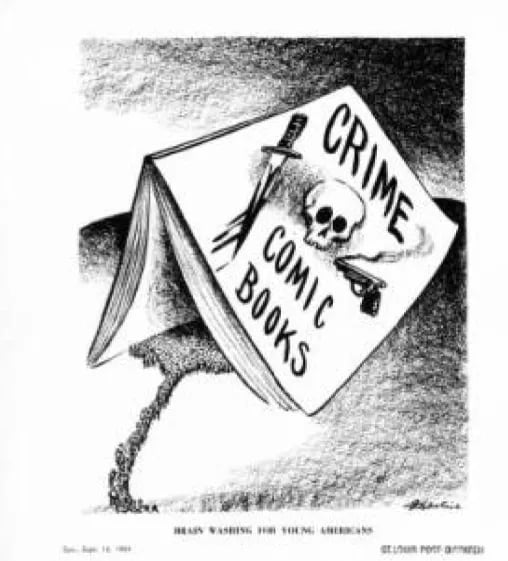
This week we’re going to talk a little about translated European comics and the bandes dessinée (BD for short). According to Wiki, bandes dessinée “are comics that are usually originally in French and created for readership in France and Belgium.” Just as Japan and manga have a rich history, other countries have rich comics traditions of their own. I’ll confess that I’m still learning about the history of BD comics and comics from other European countries. While I am interested in learning more and reading more titles, I am unfortunately limited by what is available in English translation. The Wikipedia page for bandes dessinée provides an informative overview.
Even if the term bandes dessinée is new for you, chances are you are familiar with at least a couple of titles and artists. The Smurfs are a huge global phenomenon. The Adventures of Tin Tin is a popular title in the rest of the world. Métal Hurlant was translated into English as Heavy Metal, which had a huge impact on British comics. The artist Jean "Mœbius" Giraud is well known and well respected around the world.
It’s been suggested that one of the big differences between U.S. comics, European comics, and manga is who is in control of the final product. That U.S. comics are more editor driven, European comics are writer/artist driven, and manga have a strong editorial process that leads to a single writer/artist final product. Assuming that structure is correct, even within those systems, there can be great variety.
There are a few specific characteristics worth talking about that separate some European comics and BDs apart from other types of comics. European comics have a different publishing schedule and they are often (but not always) published as albums. Albums have more pages than issues of comics in the U.S. do and they also have a larger trim size in print than either graphic novels and manga tankobons. The publishing schedule and the larger page size combine to allow for a really rich style of art. This larger canvas allows for greater detail in character design, facial expressions, and backgrounds which results in some gorgeous panels. There comes with BD comics an expectation of high quality.
Here are some randomly selected examples.
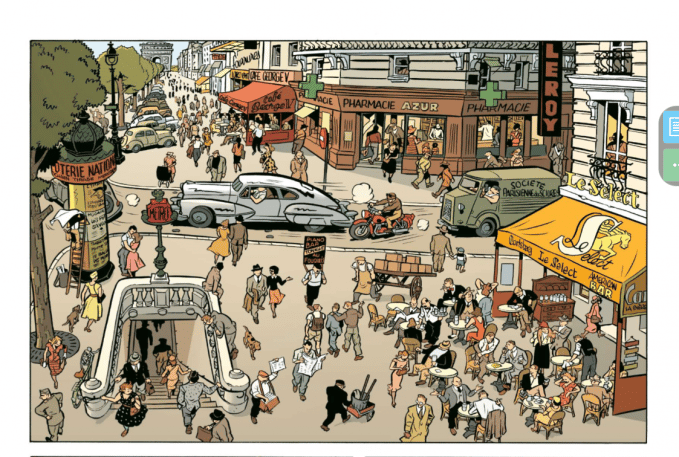
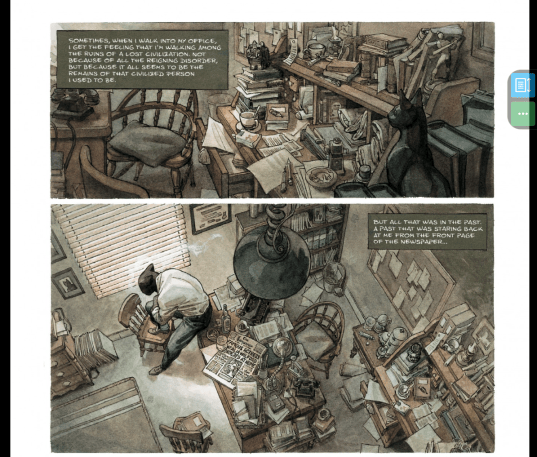
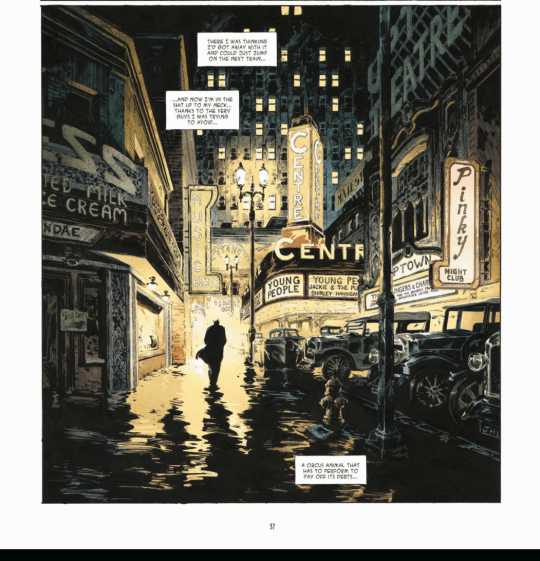
In order to show the differences in trim sizes between European albums, U.S. graphic novels, and manga tankobons I made this crudely staged stack of books. Within each industry, especially manga, there is great variety in book sizes but these represent the average. You can clearly see how much larger the European albums are compared to the other books
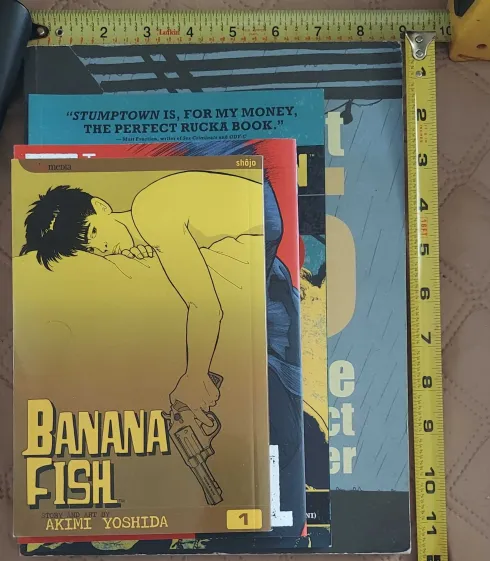
It’s worth pointing out the main publishers of BD and translated European comics for American readers. Europe Comics has a great selection of European crime comics (Note: Europe Comics have “ended all our consumer facing activities: website, social media, newsletters, events.” To the best of my knowledge they are still publishing but it’s worth mentioning because their website may start to degrade over time. I linked to a piece on their site that mentions a bunch of their crime titles. Wayback link.) Humanoids, Cinebook, and Fantagraphics all have good selections overall and varying levels of crime comics. Titan and Drawn and Quarterly also have published a few European crime comics. Initially, I was going to have the first post on translated European comics and BDs be a selection from each of those publishers. Maybe down the line for that post.
[Just recently, the library service Hoopla started carrying Europe Comics and Cinebook titles. This is a great way to easily access these titles.]
This week I want to focus on a couple of the most well known translated European comics: Blacksad and The Killer. Then offer a couple of other recommendations. In the post on manga, I talked about the massive popularity of Case Closed and Golgo 13. While those titles are perfectly fine to start with, I would be inclined to offer a much higher recommendation for other manga crime titles. With BDs the two most well known titles are great places to start. They are high quality crime fiction, and are easily available in a variety of formats. So if you want to dive right in by reading Blacksad or The Killer, please do!
There will be more coverage of translated European comics in upcoming posts.
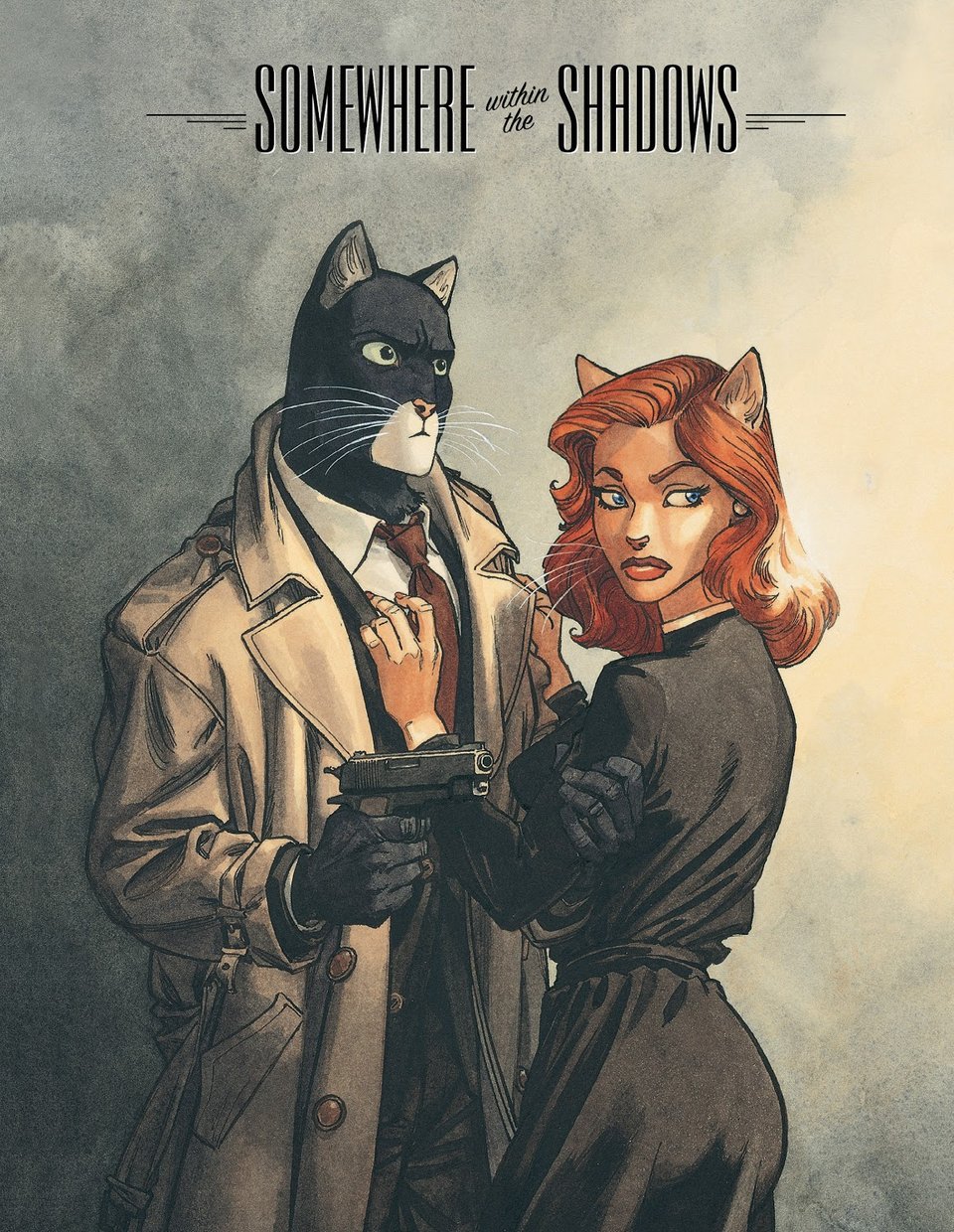
The first Blacksad album was published in 2000. All Blacksad albums are in print and easily available in print, digital, and through digital library services. It appears that Dark Horse and Europe Comics each have English versions available. I’m not sure if there are any differences in them.
Like many subjects, European comics aren’t a single entity. There are many countries producing many comics from many comics industries for many readers. With that said, it’s probably fair to say that bandes dessinée are the front-facing European comic as far as the rest of the world are concerned. When many readers think of European comics, they think of bandes dessinée. Blacksad illustrates this in an interesting way. It was originally published in French by Dargaud in album format but it was created by Spanish authors Juan Díaz Canales and Juanjo Guarnido. I wonder if the French appreciation for noir and hardboiled fiction played into this decision.
Blacksad is a fully anthropomorphic story, with all of the characters in this world being animals with human attributes. Comics have a long history of using anthropomorphic characters. You can easily come up with some examples. Blacksad isn’t even the only anthropomorphic crime comic. I may do a post about them at some point in the future.
What sets Blacksad apart is twofold. First, the stories are a concentrated shot of noirboiled. Canales has a strong love for and understanding of what makes the classic noirboiled stories work. Second, is the art. Blacksad illustrates these characters in a highly detailed, realistic way.
The world of Blacksad is a recognizably mid-20th Century America and the stories don’t shy away from political topics of the time like racism, sexism, inequality, nationalism, inequality, and other topics. Each album is about 50 pages long and tells a complete story. The more albums you read the better sense of the character and his world you get.
Blacksad is compelling and rich crime fiction and should appeal to readers who like classic film noir and beautiful art.
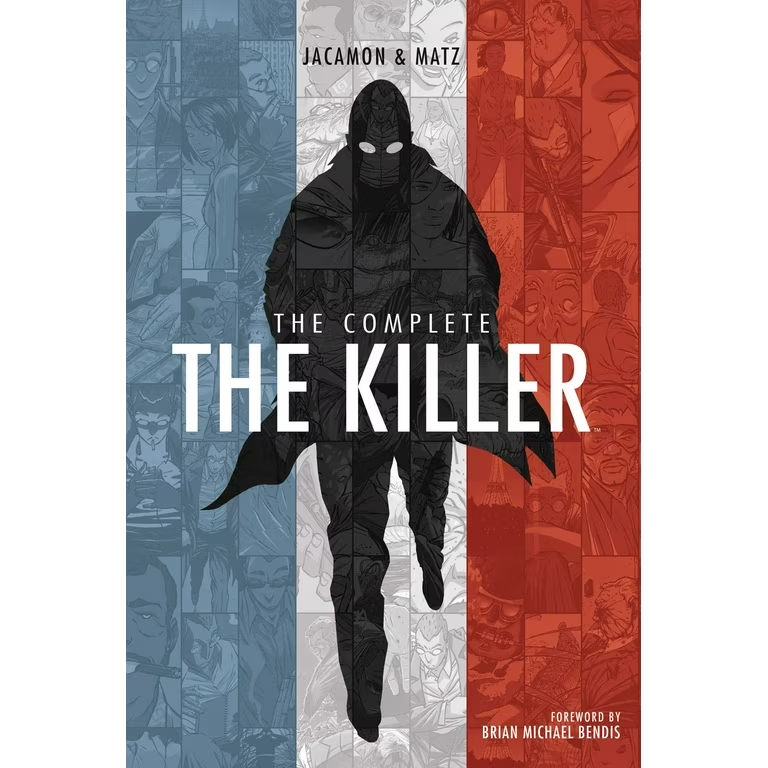
The Killer by Matz consists of 13 albums that were published from 1998 through 2014. The English translations of the albums have been collected in a variety of formats over the years. In my opinion, the best version to get is The Complete The Killer. The albums should be read in order.
When we first meet our nameless protagonist he’s been staking out a job for days on end and just internal monologuing away. On a professional level we will learn that Killer is quite good at what he does. On another level, we will also learn that Killer spends a lot of time in his head. Externally, he’s quiet and stoic, internally he’s quite the chatterbox. That internal narration will take many forms. Sometimes it’s like he just found a philosophy or history 101 book. Other times it’s good context or information for what’s happening or where Killer is at.
The initial job that opens the book will be a kicked pebble that causes an avalanche. Killer will find himself immersed in the larger, international world of geopolitics, governmental agencies, big players, and oil companies. From Columbian cartels to attempts to destabilize the Venezuelan government to getting in bed with the Cubans and all of them with the specter of American and European governmental agencies and shadow interests looming and waiting to strike.
I won’t be able to fully capture the story and scope of The Killer in what is essentially a capsule review. At nearly 800 pages and 13 volumes, The Killer is a fairly staggering work with a lot of time covered and story told. Rightly so, it’s considered one of the greats. It’s absolutely worth reading.
[The Netflix Original of it all: After years of being in development David Fincher finally made his film adaptation of The Killer starring Michael Fassbender in the lead role. Similar to the adaptation of James Sallis’ Drive, The Killer breaks off a small piece of a much larger story and adapts that portion. The international scope, the geopolitics, and frankly, the entire second half of the series are all cut. The book also includes flashbacks to Killer’s early days as a hitman and includes scenes (and small subplots) with his partner and their eventual child.]
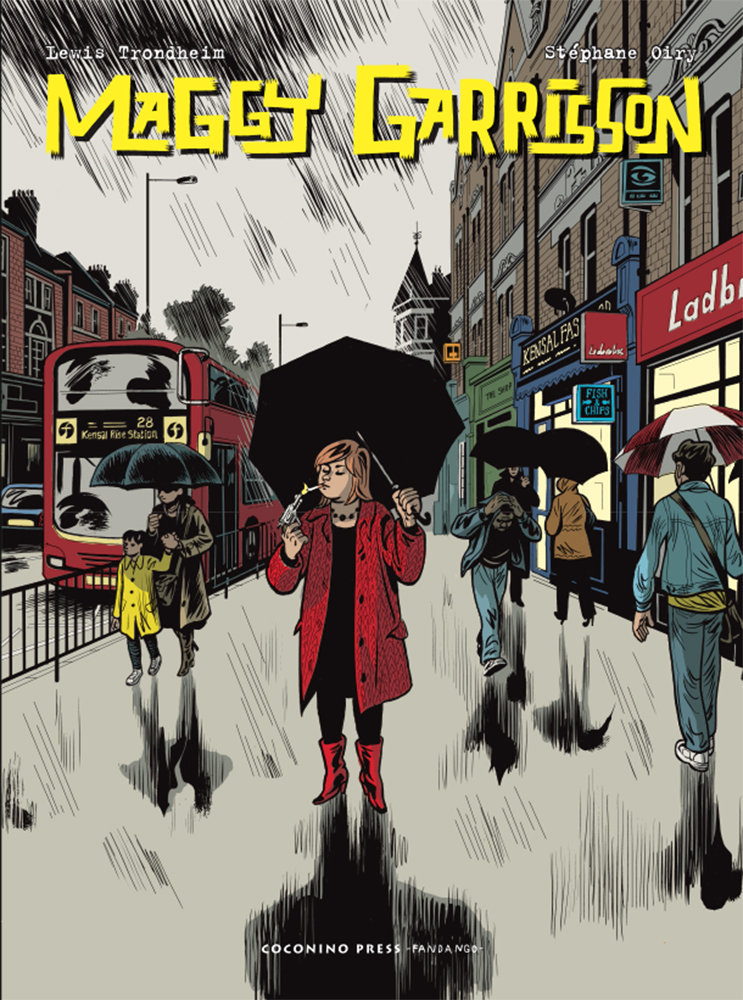
Maggy Garrisson by Lewis Trondheim & Stephane Oiry was first published in the U.S. by Self Made Hero in 2019 and contains the three albums “Give Us a Smile, Maggy”, “The Man in My Bed”, and “Shame It Had to End This Way”. Each of the three albums were earlier published in France and the English language volume was translated by Emma Wilson.
Maggy Garrison (the character) is a wonderful addition to the crime fiction canon. She’s sardonic and clever and a little cynical. She’s tough and determined and not afraid of getting her hands dirty.
When the story starts, she’s out of work and her neighbor sends her over to her nephew’s for work, he’s a P.I. When she gets there he’s passed out drunk. She answers the phone, takes a message, and answers a knock at the door. Eventually, the detective wakes up and tells her that he doesn’t have anything for her and she should go home. But it turns out that by helping the person she spoke to when she answered the door, she discovers there’s clever and unscrupulous ways to make a few quid and, more importantly, the phone message she took will pull her into the orbit of the detective and something else he’s working on. Before long she’ll be involved with coppers, some low level tough guys, and a leg breaker. The most important question on Maggy’s mind is always “Am I going to get paid for any of this?”.
Despite his cliched beginnings as an alcoholic detective, the detective is only a part-time drunk at best and is actually quite good at his job. He’s also fairly grounded in reality. He understands the limits of his profession and is never gripped with a desire to solve a case as if doing so would save him. It’s just a job for him. This actually makes him a good partner for Maggy. Sometimes he’ll express the limits or legal confines of a job and Maggy will come up with an idea that charts that course in a way he’s comfortable with. By the end of the story their business relationship has grown and they are on more equal footing.
On the criminal side of things, the crime boss isn’t some big shot who controls the entire city. He’s the boss of a neighborhood and has three guys working for him. That’s it. All of these characters are lower level and are just trying to improve their lot in life in some small way. That may be starting a relationship, squaring away a little bit of cash, or just trying to get out of a jam. Except for a couple of plot points, this is all pretty small stakes stuff.
The three albums in the collection form a complete story that should be read in order. Despite its French origins, the story is actually set in London and Maggy Garrison is a fine piece of Brit Grit. I was really impressed by the plot machinations of the third album. It moves a lot more than the previous two albums and comes together in really clever and unexpected ways. If there aren’t any more Maggy Garrisson stories, the whole thing wraps up nicely. Maggy Garrisson is great crime fiction.
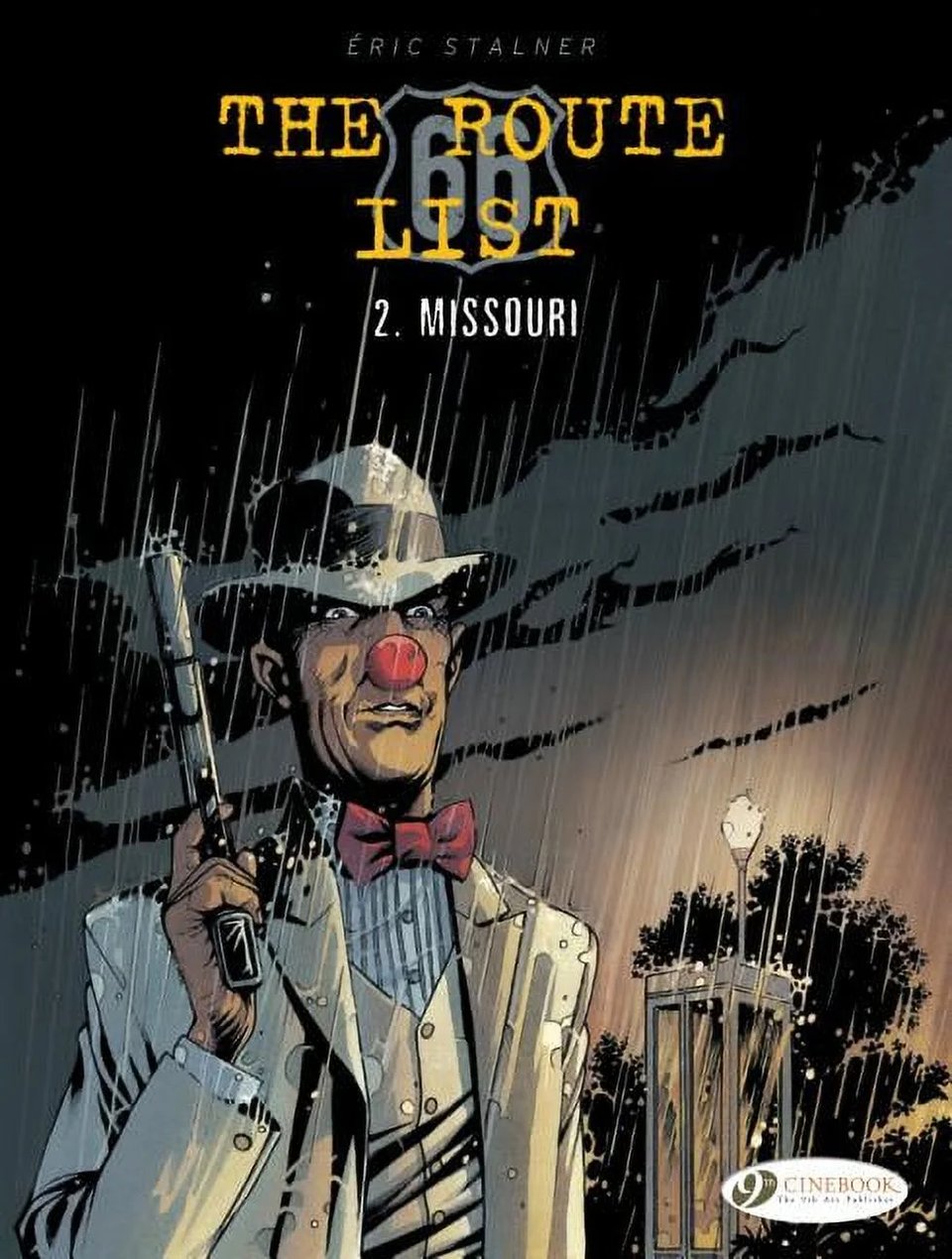
The Route 66 List by Eric Stalner is published by Cinebook and consists of five volumes: Illinois, Missouri, Kansas, Oklahoma/Texas, California. It is a complete story in five volumes and should be read in order. It is available in print, digitally, and through the library service Hoopla.
The Route 66 List opens with a funeral. The main character’s wife died in a sudden car accident the same day as the failed Bay of Pigs invasion. Her best friend is pressuring him for more information. A killer that wears a clown nose is stalking Illinois and taking seemingly random people out. But nothing is as it seems and everyone has their secrets. The main character knows what links the victims and abruptly disappears into the night. The wife’s friend isn’t as she seems. The main character isn’t as he seems. Hell, even the clown nosed killer isn’t as he seems. The so-called Route 66 list is at the heart of the story. What is it and who is on it?
The Route 66 List is a compelling mixture of different crime fiction genres. It’s an espionage story, a detective story, a kind of serial killer story. There are elements of behind enemy lines and road trip stories. It is a Cold War conspiracy thriller told in crime fiction mode. The entire store unfolds along the backroads and small towns of mid-20th century America.
The characters are richly written and drawn and the entire thing exists in this web of grey morality. The simple white hat/black hat moral binary is absent. The U.S. agents are brutal and the Russian infiltrators aren’t as they seem. This is where the backroads of America setting becomes important because all of the proxy battles these characters are fighting are so far off the radar screens and agendas of the powers that be that all manner of violence takes place. Even the son, who initially gets pulled into this story against his will after his mother’s death will become more of a willing participant.
In the post on manga I said about Banana Fish it was the type of book you hope to find when you start digging into a subject and you are looking for great works that aren’t as well known as they should be. The Route 66 List is another of these books. I haven’t seen much chatter about it, it absolutely deserves to be better known, and it’s just sitting there waiting to be discovered and read by a wider audience.
I would pair The Route 66 List with some of the classic Cold War era spy novelists like John le Carré. The obvious pairing would be the TV show The Americans, which deals with deeply embedded Russian spies into American life.
Do you have a favorite translated European crime comics? Have you read any? Which ones did you like?
You just read issue #6 of Bad Karma, Loose Ends & Stray Bullets: Exploring the World of Crime Comics. You can also browse the full archives of this newsletter.